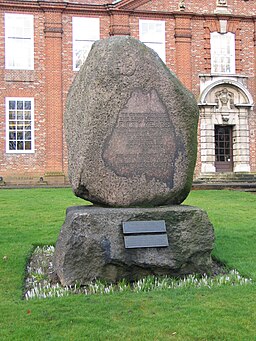Ronald Aylmer Fisher (1890-1962)
As a young child, R. A. Fisher had bad eyesight, so he was told to read only in natural light. This meant that much of his early education was done using visual rather than written aids, so Fisher developed a deep intuition in geometry. He began his career in industry after graduation from Cambridge. Fisher met Karl Pearson (1857-1936) early in his career and was introduced to the problem of determining the distribution of the correlation coefficient. He solved the problem in a week and submitted his solution to Pearson for review and publication his journal, Biometrika, but Fisher was known for leaving out pieces of proofs that he assumed were clear to everyone else. In an attempt to understand Fisher's explanations enough to edit them and prepare for publication, Pearson shared Fisher's work with William Gosset (1876-1937) who also had trouble following it. Pearson delayed publishing to allow his calculators (people who were hired to run computations) to verify the calculations supporting Fisher's work for over a year. Pearson eventually published Fisher's results, but it was given as an appendix to the tabular calculations of one of his own calculators. After this, Pearson rejected another of Fisher's papers and then contributed to the rejection of his paper by the Royal Statistical Society. Pearson later offered Fisher a job at his University College London Statistical Laboratory. Fisher accepted, but long-standing animosity had developed between the two statisticians that affected their future working relationship.
Fisher and Pearson disagreed on many things, but their main
approach to understanding probability distributions was one
major discrepancy. Pearson focused on analyzing the
distributions of data while Fisher considered the underlying
theoretical distribution of the population, only using the
distribution of sample data to estimate parameters of a
distribution. Fisher coined the term statistic
to refer
to values derived from the sample used to estimate a parameter.
Their incompatible personalities eventually led Fisher to leave the position at the University Laboratory for a job at Rothamsted Experimental Station in the English countryside. Fisher never published in Biometrika again, even though it was the main mathematical journal of the time. It is unclear whether this was due to Pearson not allowing him to publish or Fisher disliking Pearson's attitude towards his work.

While at Rothamsted, Fisher published his work under the
title Studies in Crop Variation
which was split into
four separate parts or studies. Study I was computation
intensive. Fisher used a mechanical calculator called the
Millionaire, but even with this help, the calculations
included would have taken around $185$ hours of work for each
table. This means the calculations and the four complicated
graphs he included would have required at least eight
months of 12-hour days. The later studies discussed study
design, including randomness,
analysis of variance (ANOVA), and analysis of covariance.
His The Design of Experiments (1935) includes much of
the study design he developed while at Rothamsted.
He left Rothamsted and became a professor at University College London in 1933. During this time, his famously irascible temperament let him into conflict with fellow statistician, Jerzy Neyman (1894-1981). At a conference both men attended, Neyman presented a paper describing his work with confidence intervals, saying that it was a different representation of the ideas Fisher had published on fiducial statistics. Fisher referred to the work as a generalization of his own work but argued that confidence intervals may not be unique without using sufficient and ancillary statistics. He thought they were valid mathematically but said that they had little practical value. From then on, Neyman and Fisher were sharply critical of the other's work. Fisher had openly contended with other statisticians, including Karl Pearson, but the verbal and written debates between Fisher and Neyman may have been the most heated. Though the perception of him as someone hard to get along with comes with his legacy, he was not without amicability. He was a great support to his students in their own endeavors, and he provided Chester Bliss with a place to stay and a job when he was in need.

Fisher made important contributions to many areas of statistics, including but not limited to, study design, testing significance of regression coefficients, the F distribution, the distribution of a chi-square statistics, including determining the correct number of degrees of freedom, and hypothesis testing. He defined very clear assumptions for tests of significance. While generally having a scientific and objective approach, he became personally invested in research about smoking and lung cancer. He was a smoker, and published several papers and compiled them into a pamphlet arguing that any data and analysis showing that smoking causes lung cancer was faulty. Studies looking at the link between smoking and cancer are necessarily observations studies and have often relied on hypothesis tests. He believed hypothesis testing should only be used for randomized controlled experiments, not observational studies.
One area in which Fisher made contributions was not widely accepted by the scientific community: fiducial statistics. This was based on inverse probability, and so attracted controversy in the statistical community. Though it had Fisher's support, it was not readily accepted and died out after Fisher died in 1962 from a surgical complication.